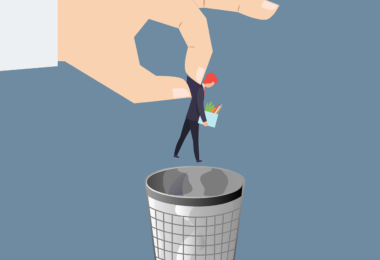Bangs and trips are an inevitability with children, so brush up on your first aid skills.
As a dad, you’ll already be aware that children are naturally inquisitive. Of course, with this exploration and adventure comes injuries, and while most of the time that quivering bottom lip can be vanquished with a hug or the appearance of their favourite cuddly toy, sometimes it can’t. When faced with a serious emergency situation, it’s vital that you have the skills and confidence to be able to help.
With a recent survey finding that two-thirds of parents wished they had more first aid know-how*, British Red Cross’ Tracey Taylor has shared 10 top tips for families.
1. Courses
Go on a baby and child first aid course. Why not take your family and friends along? You will all leave with miles more confidence and the skills to be able to take action in an emergency situation. Plus, you’ll have an experienced trainer there to support you throughout.
2. Everyday Items
These can be so useful in an emergency! Cold milk is great to cool a burn if you don’t have access to cold running water, or frozen peas wrapped in a tea towel is ideal for soothing a small bump to the head.
3. Burns and Scalds
Even under the most watchful parent, accidents happen – at times we need eyes in the back of our heads! If your baby or child burns themselves, cool the burn under cold running water for at least ten minutes. Whilst cooling, get someone to call 999 for an ambulance if necessary. Once the burn has been completely cooled, cover it loosely with cling film or a clean plastic bag and ensure you get your child checked out.
4. Febrile Seizures
These can occur in younger children and babies when they become too hot – which can happen as a result of a fever. If your baby or child is red-faced and hot to touch, and you see they are arching their back, stiffening their body and have clenched fists, this may be a febrile seizure. The key thing you need to do in the moment is protect them from injury and reduce their temperature. Don’t panic, while this is a terrifying situation, it does normally appear worse than it is and most children make a full recovery once they have cooled down.
5. Bumps or Blows
Bumps to the head are common for youngsters and are normally nothing to worry about, but a blow to the head may result in the baby or child having pain or a headache. You might see a bump on their head and they may look pale. First, get your little one to rest and apply something cold to their injury (e.g. frozen peas wrapped in a tea towel). If they become drowsy or vomit, or their condition seems to get worse, then this could be the sign of a more serious head injury such as concussion, so call 999.
6. Meningitis
A common concern for parents and one we at the British Red Cross get asked about frequently. Signs to look out for if your baby or child is unwell are flu-like symptoms, a headache and a high temperature. They may also complain of a stiff neck and be sensitive to light. If you suspect meningitis, call 999 – trust your instincts!
7. Bee Stings
These can happen easily in the warmer months and – while not harmful – can be scary for children. When an insect sting is visible on the skin, a credit card can be used to scrape it away. Using the edge of the card, drag it across the skin to remove the sting. Using a credit card or your fingernail is better than using a pair of tweezers as they can squeeze the sting and inject more position into the little casualty!
8. Cuts
Hopefully your little one won’t be coming into contact with anything sharp enough to cut them but with garden sheds, kitchens and even glass, accidents can happen. If your child has cut themselves and they are bleeding heavily, put pressure on the wound with whatever is available to stop or slow down the flow of blood. Call 999 immediately for emergency help and keep the pressure on the wound until help arrives.
9. Harmful Substances
Always make sure you keep things like alcohol, drugs (prescription or non-prescription) and chemicals (including household cleaning products) out of children’s reach. If they do swallow something harmful, then try to establish what they have taken, when and how much. Then call 999 right away.
10. Stay Calm
You may be a very clear-headed person but when it’s your child in danger, anxiety can easily take over. Always stay as calm as possible and think about downloading the baby and child first aid app, which is packed with information, useful animations and tips, meaning you have first aid at your fingertips in any emergency.
*Survey by British Red Cross
Tracey Taylor will be speaking at The Baby Show, taking place from the 19th – 21st February at London ExCeL.


![[Image - Ryan McGuire]](https://www.fqmagazine.co.uk/wp-content/uploads/2016/02/dfa7f6322712614e6e049fc346875c0a.jpg)





